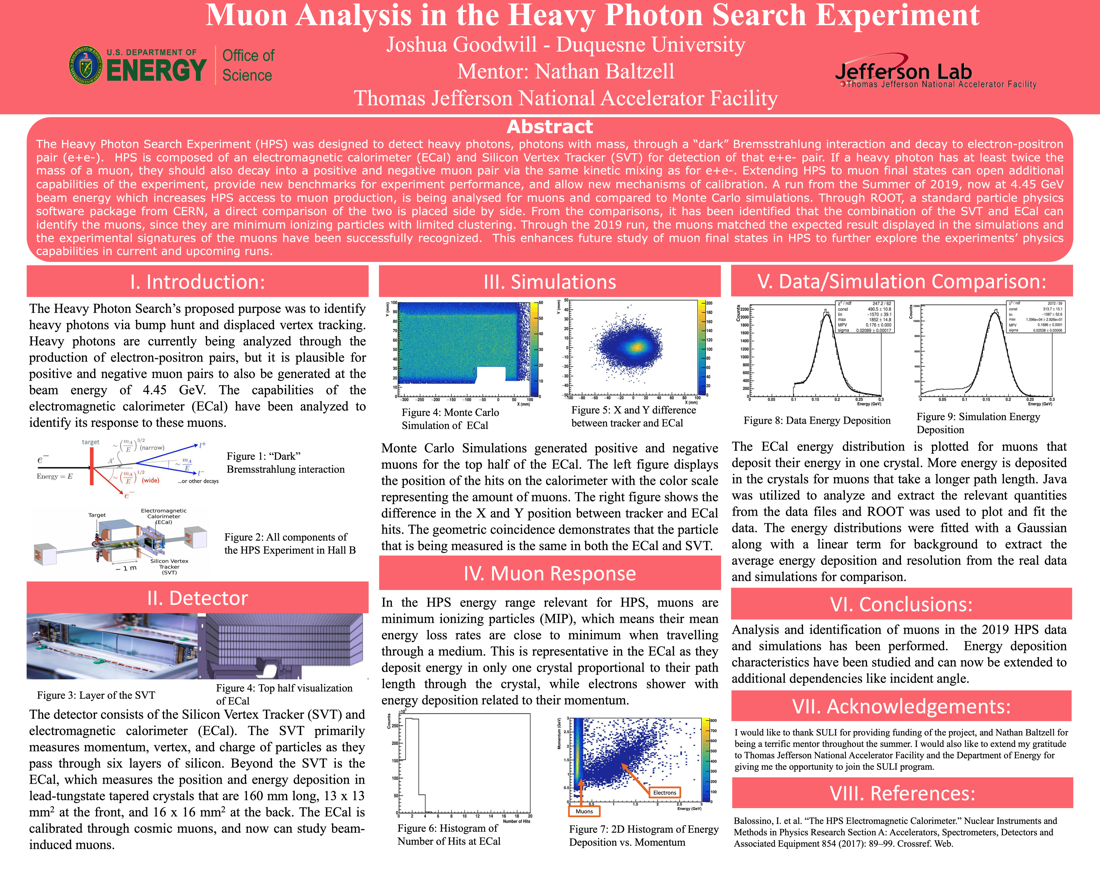Undergraduate Research at Jefferson Lab
Muon Analysis in the Hall B Heavy Photon Search Experiment
Student: Joshua Goodwill
School: Duquesne University
Mentored By: Nathan Baltzell
The Heavy Photon Search Experiment (HPS) was designed to detect heavy photons, photons with mass, through a "dark" Bremsstrahlung interaction and decay to electron-positron pair (e+e-). HPS is composed of an electromagnetic calorimeter (ECal) and Silicon Vertex Tracker (SVT) for detection of that e+e- pair. If a heavy photon has at least twice the mass of a muon, they should also decay into a positive and negative muon pair via the same kinetic mixing as for e+e-. Extending HPS to muon final states can open additional capabilities of the experiment, provide new benchmarks for experiment performance, and allow new mechanisms of calibration. A run from the Summer of 2019, now at 4.45 GeV beam energy which increases HPS access to muon production, is being analysed for muons and compared to Monte Carlo simulations. Through ROOT, a standard particle physics software package from CERN, a direct comparison of the two is placed side by side. From the comparisons, it has been identified that the combination of the SVT and ECal can identify the muons via their minimum ionizing signatures. Through the 2019 run, the muons match the expected result displayed in the simulations and the experimental signatures of the muons have been successfully recognized. This opens the door for future study of muon final states in HPS to further explore the experiments' physics capabilities in current and upcoming runs.
[Watch the presentation on YouTube]

Citation and linking information
For questions about this page, please contact Education Web Administrator.
